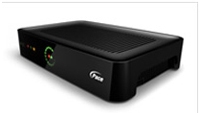Pace and Tivo employing a Trojan horse?

Pace, the UK-based, world number one set top maker, has teamed up with timeshifting DVR vendor Tivo to develop products for hybrid services combining broadcast and web-based content.
This involves Pace licensing Tivo’s Hardware Porting Kit and collaborating on development of a Tivo-verified platform, initially targeting cable operators across the Americas.
This affects Comcast in the U.S., which is the only major cable company to already be a customer of both companies. Comcast now uses some Pace set top boxes, and offers the Comcast Tivo with DVR service including integrated search. Under a deal struck between the companies in 2011, this delivers Comcast's OnDemand service on the Tivo platform, alongside Netflix and other offerings. Following the deal between the two companies, Comcast may deploy a branded Tivo DVR manufactured by Pace.
The other obvious target in Latin America is Cablevision Argentina, which, with three million customers, is the country’s largest pay TV operator, and the second-largest cable company in South America after Net Servicos of Brazil.
If the relationship is extended to Europe, this could bring in major customers such as Kabel Deutschland, Numericable in Spain, and TV Cabo in Portugal. However Liberty Global, which has cable operations in several European countries including Germany and the Netherlands, would be unlikely to be interested, having developed its own hybrid box called Horizon. Then, Virgin Media, the UK’s dominant cable operator, would also not be interested because it already has its own version of the Tivo box offering integrated Internet connected and broadcast services to premium customers, even though it also has Pace set top boxes.
There is also the possibility of extending the relationship to cover satellite set tops, which could interest some more big Pace customers including DirecTV in both the U.S. and Latin America, along with Sky Deutschland, Sky Italia, Canal+ of France and others in Europe.
Such deals are likely to sustain the set top box market for some years to come, with ABI Research predicting that globally it will grow from 211 million units shipped in 2011 to 242 million by 2016. However, this growth will be driven entirely by Asia-Pacific and Latin America where, with a fast-growing middle class in a number of countries, many more subscribers each year are able to afford pay TV subscriptions for the first time. Set top box shipments in both North America and Western Europe are set to decline, especially in the already saturated cable sector, which is now shedding subscribers to both Telco and satellite alternatives in some cases, with OTT also a rising threat. Ultimately, the rise of OTT and content delivery platforms connecting directly to TVs will lead to a global decline in set top box shipments, but ABI Research at least does not count on this happening until after 2016.
The professional video industry's #1 source for news, trends and product and tech information. Sign up below.
This leaves Pace, as a set top box player in satellite, cable and IPTV, with some time to adjust, with good prospects in the immediate future despite a difficult year in 2011. Then, the company was beset by supply chain issues resulting both from the Japanese tsunami and floods in Thailand, with the latter affecting availability of disk drives for its set tops manufactured by Western Digital and Seagate. This, combined with some poor handling of expectations and three profit warnings, caused Pace’s share price to slump through the year to, at one time, only one-quarter its earlier value.
